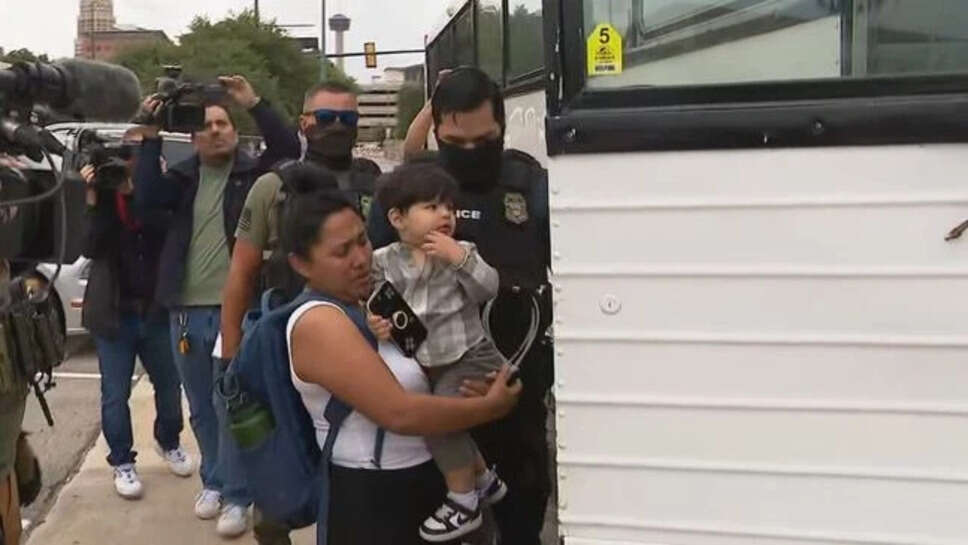Union Says 17 Immigration Judges Fired “Without Cause” Amid Deportation Surge

In a move that sent shockwaves through the U.S. legal community, the Trump administration abruptly dismissed 17 immigration court judges across ten states—without citing formal cause or offering detailed explanation. The decision has sparked a storm of concern from legal observers, immigrant advocates, and judicial insiders who fear the move could destabilize an already overloaded system.
This is not simply a bureaucratic shuffle. For many, it signals deeper shifts in how immigration law is being administered and what values are being prioritized in the courtroom—justice, speed, or political loyalty.
The Silent Firings
The judges were relieved of their duties almost simultaneously, most of them receiving notice late on a Friday or early Monday. Many had been presiding over high-volume courts in states like New York, Texas, California, Illinois, Massachusetts, and Virginia, all of which are key centers in the immigration legal framework.
What was particularly unsettling, according to internal reports, was the absence of any formal performance review or misconduct allegations prior to their termination. Most had strong case clearance rates, were respected by attorneys on both sides, and had built years of experience in handling complex immigration matters.
The Immigration Court Backlog
The United States is currently dealing with a record immigration case backlog, with over 3.5 million active cases pending across hundreds of courts. On average, immigrants now wait nearly two to three years for their hearings. Judges handle dockets with hundreds of cases per month, often under pressure to expedite decisions.
In this scenario, the removal of 17 judges isn’t just administrative—it represents a critical loss of bandwidth. Fewer judges mean longer delays, more rescheduled hearings, and heightened stress on both immigrants and legal professionals.
Politics or Policy?
While no official reason was given for the mass firings, many within the legal community believe the dismissals are ideologically motivated. Under the Trump administration, immigration policy took on an aggressive tone—emphasizing border control, deportation, and the dismantling of what it deemed “loopholes” in the asylum system.
Several of the dismissed judges were known to take moderate or humanitarian stances in asylum and deportation cases. Some had challenged enforcement practices or raised concerns about due process. Their removal, critics argue, could be part of a broader strategy to reshape the immigration courts into tools of fast-track adjudication, rather than independent judicial bodies.
Impact on Immigrants and Legal Rights
For thousands of immigrants caught in legal limbo, the firings could have real and painful consequences:
-
Case delays could worsen, with hearings postponed by months or even years.
-
Judicial continuity is broken, forcing new judges to revisit the facts and history of complex cases.
-
Appeals and reversals may spike, particularly if less experienced judges are rushed into service.
Additionally, many lawyers worry that these changes create an atmosphere of fear among remaining judges, who may feel pressure to align their rulings with political expectations rather than legal principles.
The Courtroom as a Battleground
Immigration courts operate differently from traditional courts. They are not part of the judicial branch, but rather housed within the Department of Justice, making judges technically employees of the executive. This structure leaves them vulnerable to administrative decisions, including sudden terminations.
Critics have long argued that this undermines judicial independence and makes immigration judges susceptible to political tides. The mass firings underscore this concern, prompting renewed calls to reform the immigration court system—perhaps by establishing it as an independent body, insulated from administrative interference.
Fallout in the Legal Community
Among immigration attorneys, the mood is tense. Some worry that the firings will lead to a chilling effect, where judges avoid issuing rulings that could be perceived as lenient or controversial. Others believe the firings may be a prelude to sweeping procedural changes that could reduce hearings, limit oral testimony, or fast-track deportations.
The psychological toll on existing judges cannot be ignored either. Those who remain must now balance the demands of overloaded dockets with anxiety over job security, which could affect morale, consistency, and long-term retention.
The Bigger Picture
The firings come at a time when immigration remains a politically explosive issue in the U.S. With elections approaching and public sentiment sharply divided, every legal move becomes fodder for national debate. The removal of judges appears, to some, as an attempt to reshape immigration law by controlling its enforcers—not through legislation, but by reshuffling those who interpret the law.
This strategy fits into a broader pattern observed in various agencies under the Trump administration: loyalty to policy directives is sometimes prioritized over professional independence.
Reactions and Next Steps
While there has been no official response from the Department of Justice beyond confirming the firings, several legal advocacy groups have called for public investigations. Some are considering legal action, especially if it can be shown that terminations violated employment rights or judicial ethics codes.
At the same time, congressional figures may demand explanations or pursue legislative remedies to protect immigration judges from future politically driven dismissals.
A Turning Point?
The Trump administration’s decision to fire 17 immigration judges across the country marks more than just an internal staffing change—it may be remembered as a watershed moment in the fight over the soul of immigration justice in America.
For now, those seeking justice in immigration courts face an even longer, more uncertain road. Judges walk a finer line, advocates redouble efforts to safeguard fairness, and the future of immigration adjudication remains more volatile than ever.
In an already polarized climate, the question now is not just whether the system works—but who controls it, and to what end.
.jpg)